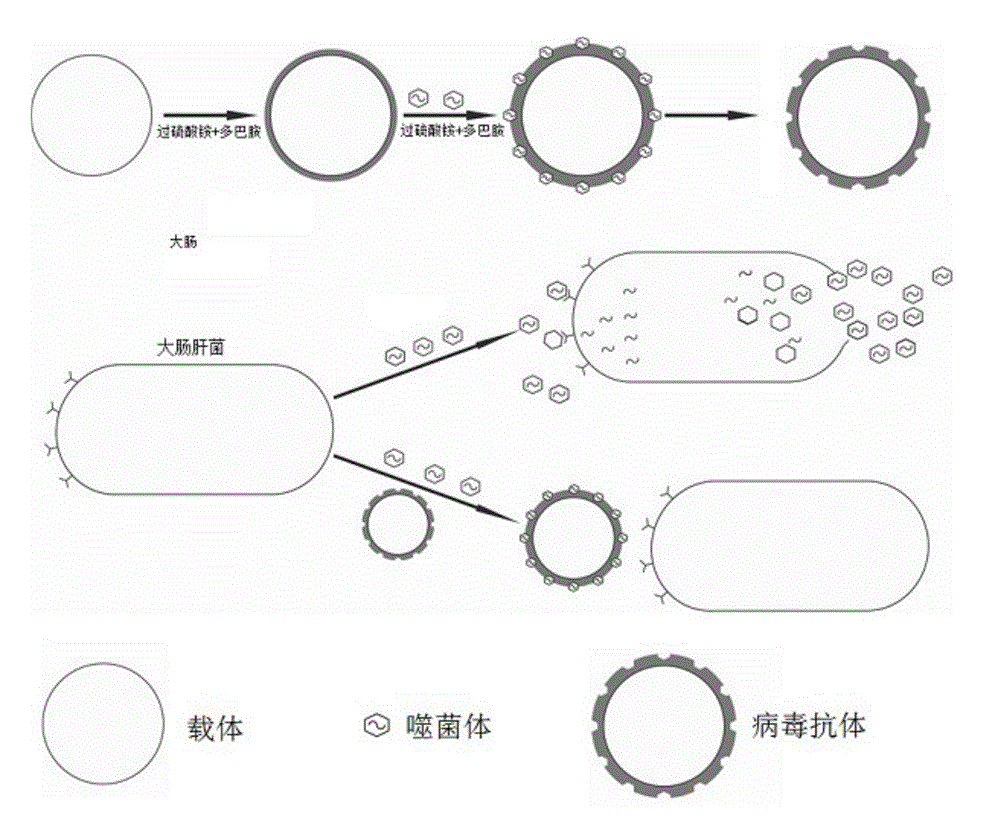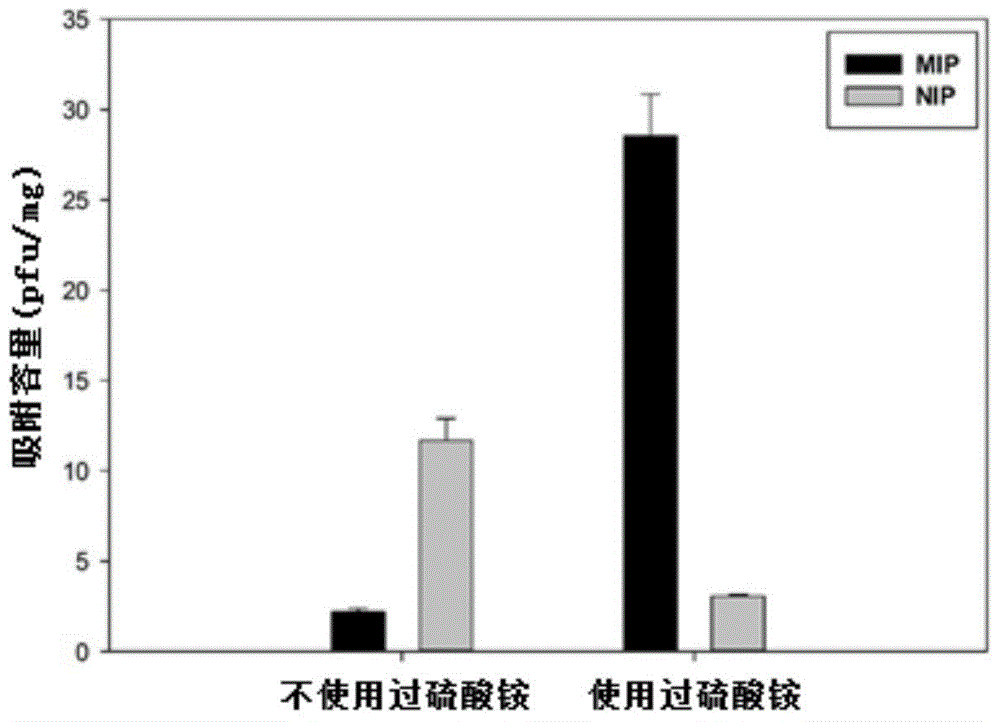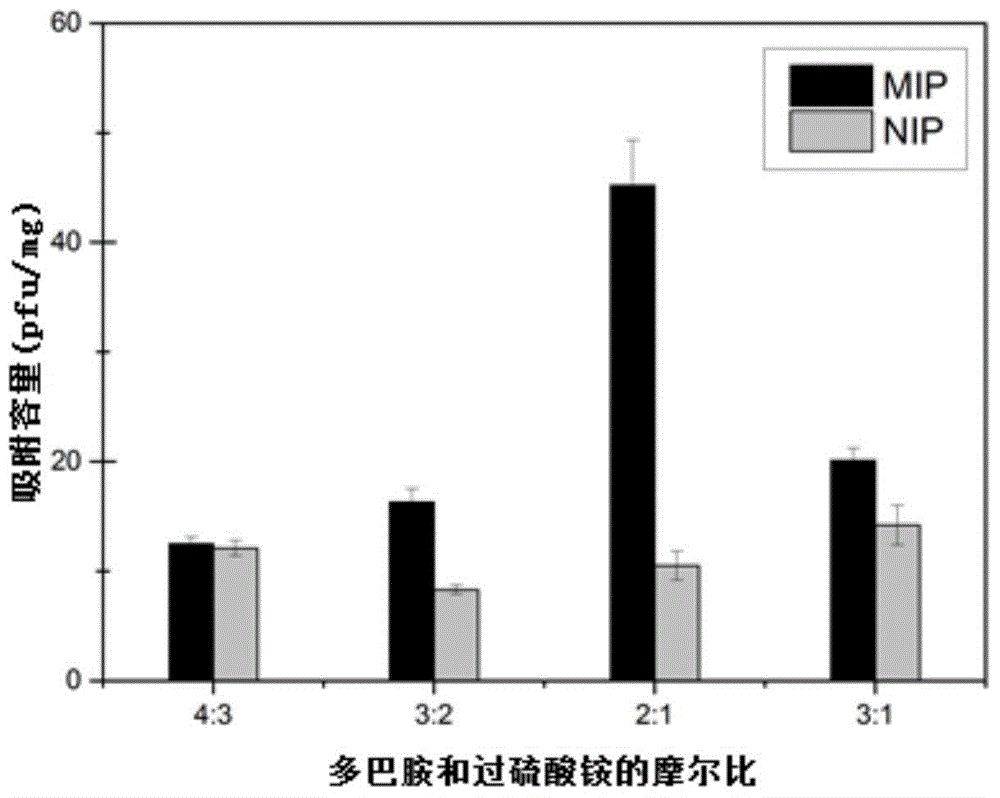Method for preparing anti-virus molecularly imprinted polymer
A molecular imprinting and anti-virus technology, applied in chemical instruments and methods, other chemical processes, etc., can solve the problems of poor imprinting effect, virus variability, affecting imprinting effect, etc., to ensure specific recognition ability and simple regeneration method. , the effect of good economic benefits
- Summary
- Abstract
- Description
- Claims
- Application Information
AI Technical Summary
Problems solved by technology
Method used
Image
Examples
Embodiment 1f2
[0043] Example 1f2 Preparation of phage antiviral molecularly imprinted polymer (MIP)
[0044] Step 1: Surface modification of the carrier
[0045] Dissolve ammonium persulfate and dopamine in a Tris-HCl buffer solution with a pH value of 7.5 at a molar ratio of 2:1 to form a dopamine buffer; add silica microspheres as a carrier material to part of the dopamine buffer, and expose Slowly stir in the air to react, centrifuge and discard the reaction solution after 12 hours to obtain a dopamine-silicon dioxide complex;
[0046] In the reaction solution, the concentrations of dopamine and ammonium persulfate were 2 mg / mL and 1.5 mg / mL respectively, and the concentration of silica microspheres was 15 mg / mL;
[0047] Step 2: Combination of virus and carrier
[0048] Mix the dopamine-silica complex obtained in step 1 with another part of the dopamine buffer in step 1, and then add the target virus f2 phage so that the concentration of the target virus in the buffer is 10 8 pfu / mL,...
Embodiment 2
[0052] Repeat Example 1 by the same steps as described, the difference is that ammonium persulfate is not added in step one.
Embodiment 3
[0054] Repeat Example 1 according to the same steps as described, the difference is that the concentrations of dopamine and ammonium persulfate are 2 mg / mL and 1 mg / mL respectively, and the molar ratio is 3:1.
PUM
| Property | Measurement | Unit |
|---|---|---|
| thickness | aaaaa | aaaaa |
Abstract
Description
Claims
Application Information
 Login to View More
Login to View More - R&D
- Intellectual Property
- Life Sciences
- Materials
- Tech Scout
- Unparalleled Data Quality
- Higher Quality Content
- 60% Fewer Hallucinations
Browse by: Latest US Patents, China's latest patents, Technical Efficacy Thesaurus, Application Domain, Technology Topic, Popular Technical Reports.
© 2025 PatSnap. All rights reserved.Legal|Privacy policy|Modern Slavery Act Transparency Statement|Sitemap|About US| Contact US: help@patsnap.com



